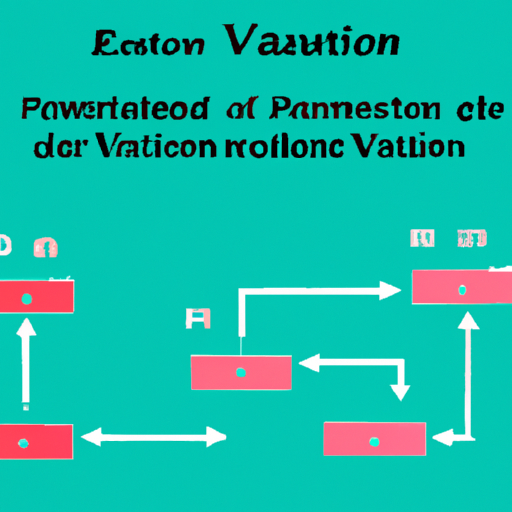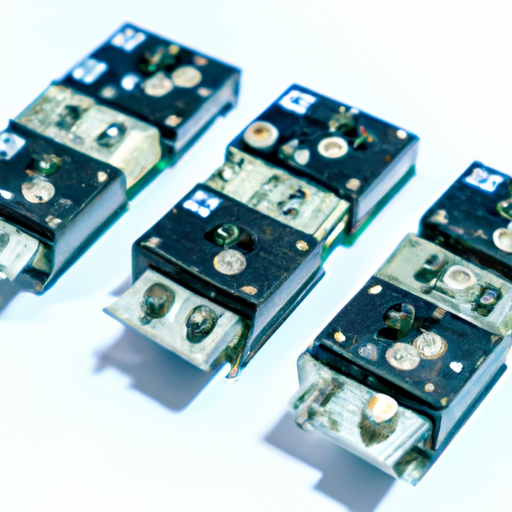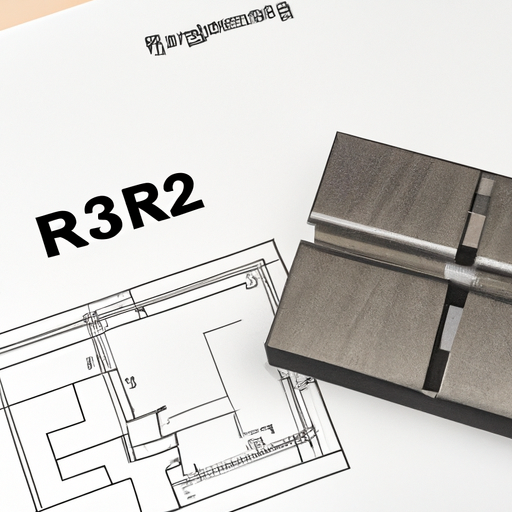The Common Production Process of Varistors
I. Introduction
Varistors, or voltage-dependent resistors, are critical components in electrical circuits, primarily serving the purpose of surge protection. These devices exhibit a nonlinear resistance that decreases with increasing voltage, making them essential for safeguarding sensitive electronic devices from voltage spikes. As technology continues to advance, the demand for reliable and efficient varistors has grown, necessitating a thorough understanding of their production process. This blog post will explore the common production process of varistors, highlighting the importance of each stage in ensuring the quality and effectiveness of these vital components.
II. Raw Materials
The production of varistors begins with the careful selection of high-quality raw materials. The primary material used in varistor manufacturing is zinc oxide, which is known for its excellent electrical properties. Zinc oxide is often combined with other metal oxides, such as bismuth, manganese, and cobalt, to enhance the performance characteristics of the varistor. These additives can improve the varistor's voltage response, stability, and overall reliability.
Quality control of raw materials is paramount in the production process. Impurities in the raw materials can significantly affect the electrical properties of the final product, leading to subpar performance or even failure in critical applications. Manufacturers often implement stringent quality control measures to ensure that only the highest quality materials are used in production. Additionally, sourcing and sustainability considerations are becoming increasingly important in the industry. Many manufacturers are prioritizing sustainable practices to minimize their environmental impact, such as sourcing materials from responsible suppliers and reducing waste during production.
III. Preparation of the Ceramic Material
Once the raw materials have been sourced and verified for quality, the next step in the production process is the preparation of the ceramic material. This begins with the precise mixing of the raw materials in specific proportions to achieve the desired electrical characteristics. The proportions and ratios of the materials are critical, as they directly influence the varistor's performance.
After mixing, the material undergoes a homogenization process to ensure uniformity throughout the mixture. This step is essential for achieving consistent electrical properties in the final product. Following homogenization, the material is subjected to milling and grinding to reduce particle size and achieve a consistent texture. The desired particle size is crucial, as it affects the sintering process and the overall performance of the varistor.
Once the material has been adequately prepared, it is shaped into the desired form using various techniques. Pressing techniques, such as uniaxial or isostatic pressing, are commonly used to create the initial shape of the varistor. Alternatively, molding methods can be employed, depending on the intended application and design specifications. The shaping process is a critical step, as it determines the final dimensions and characteristics of the varistor.
IV. Sintering Process
Sintering is a crucial step in the production of varistors, where the shaped ceramic material is heated to a temperature below its melting point. This process allows the particles to bond together, enhancing the mechanical strength and electrical properties of the varistor. The sintering process is essential for achieving the desired density and microstructure of the material.
Various sintering techniques can be employed, including conventional sintering and microwave sintering. Conventional sintering involves heating the material in a furnace, while microwave sintering uses microwave energy to heat the material more rapidly and uniformly. Each technique has its advantages, with microwave sintering often resulting in shorter processing times and improved material properties.
The temperature and duration of the sintering process are carefully controlled to optimize the material's characteristics. Typically, sintering temperatures for varistors range from 900°C to 1300°C, depending on the specific materials used and the desired properties. The resulting properties of the sintered material, such as density, porosity, and electrical characteristics, are critical for the performance of the final varistor.
V. Electrode Application
Once the ceramic material has been sintered, the next step is the application of electrodes to both sides of the varistor. The electrodes are essential for the varistor's functionality, as they provide the electrical contact necessary for the device to operate effectively. The types of electrodes used can vary, with common materials including metals such as silver or nickel, as well as conductive pastes that ensure good electrical contact.
The methods of electrode application can also vary based on the desired thickness and uniformity of the electrodes. Screen printing is a widely used technique, allowing for precise control over the electrode thickness and pattern. Alternatively, sputtering can be employed to deposit thin films of metal onto the varistor's surface. The choice of application method is influenced by factors such as production volume, cost, and the specific requirements of the varistor's intended application.
The quality of the electrodes is paramount, as they directly influence the varistor's performance and longevity. Poorly applied electrodes can lead to increased resistance, reduced clamping voltage, and ultimately, failure of the varistor in protecting electronic devices.
VI. Testing and Quality Control
After the electrodes have been applied, the varistors undergo rigorous testing to ensure they meet industry standards and perform as expected. Electrical testing is a critical component of quality control, involving the measurement of voltage-current characteristics and clamping voltage. These tests assess the varistor's protective capabilities and ensure that it can effectively handle voltage spikes.
In addition to electrical testing, mechanical testing is also conducted to evaluate the durability and reliability of the varistors under various conditions. This may include tests for thermal cycling, humidity resistance, and mechanical stress. Compliance with industry standards, such as those set by the International Electrotechnical Commission (IEC) and Underwriters Laboratories (UL), is essential for market acceptance and consumer safety. Manufacturers must ensure that their products meet these standards to gain certification and build trust with customers.
VII. Packaging and Distribution
Once the varistors have passed all quality control tests, they are packaged using materials that protect them from physical damage and environmental factors. The packaging process is designed to ensure that the varistors remain intact during transportation and storage. Manufacturers often use anti-static materials and cushioning to prevent damage from shocks or electrostatic discharge.
Logistics and supply chain considerations are also crucial in the packaging and distribution phase. Manufacturers must develop efficient systems for transporting their products to various markets while minimizing costs and ensuring timely delivery. Understanding market distribution channels is essential for reaching customers effectively, whether through direct sales, distributors, or online platforms.
VIII. Conclusion
The production process of varistors is a complex and meticulous endeavor that involves several stages, from raw material selection to final testing and packaging. Each step in the process is critical for ensuring the quality and reliability of the final product. As technology advances, manufacturers are continually seeking ways to improve production techniques and enhance the performance of varistors.
The importance of these components in protecting electronic devices cannot be overstated. Varistors play a vital role in safeguarding sensitive equipment from voltage spikes, ensuring the longevity and reliability of electronic systems. As the demand for more efficient and reliable varistors continues to grow, manufacturers must prioritize quality and innovation in their production processes.
Future trends in varistor production may include the development of new materials and innovative manufacturing methods, such as additive manufacturing and advanced sintering techniques. These advancements have the potential to further enhance the performance of varistors and solidify their role in modern electronics. Continuous improvement in manufacturing techniques will be essential for meeting the evolving needs of the industry and ensuring the effectiveness of varistors in protecting electronic devices for years to come.













